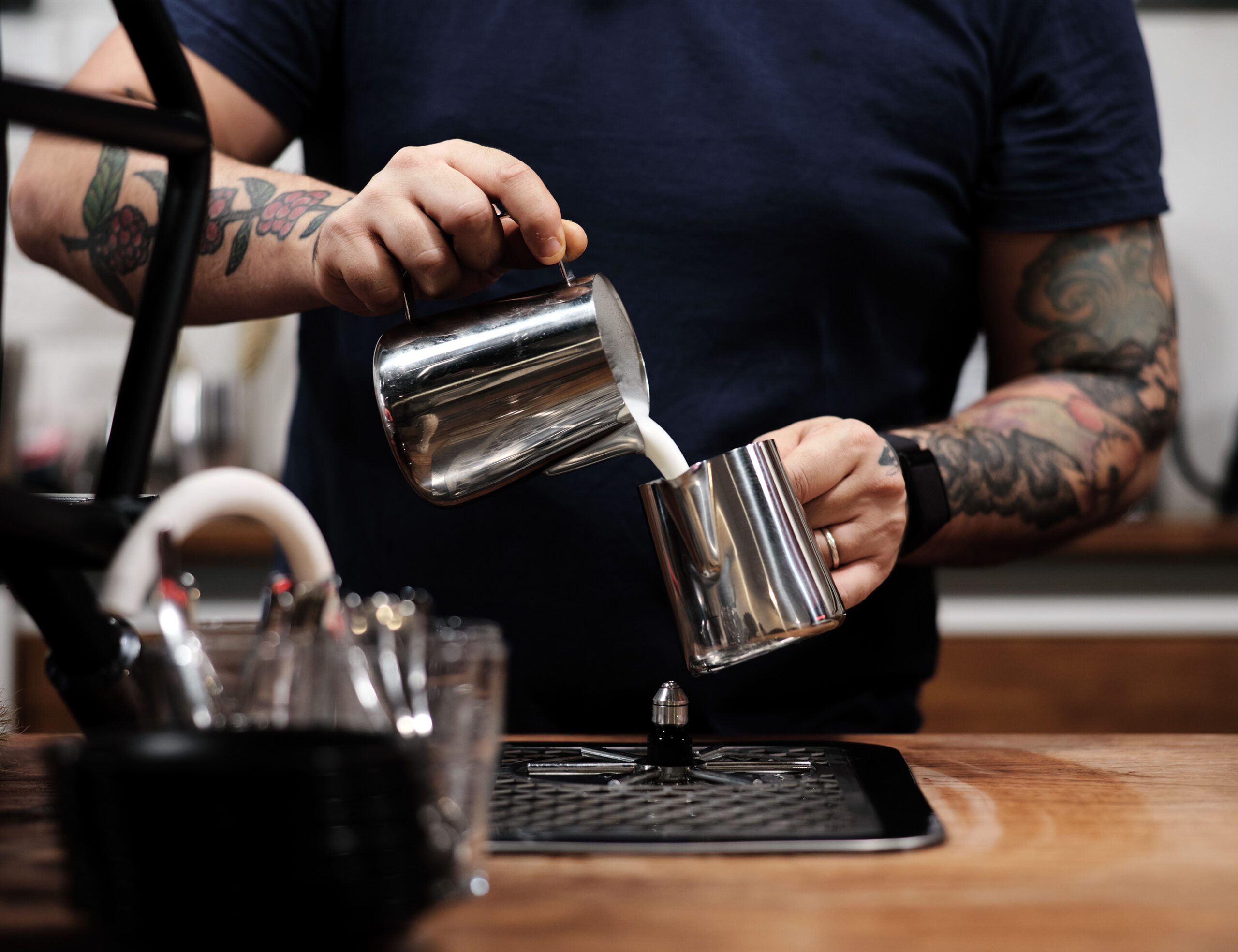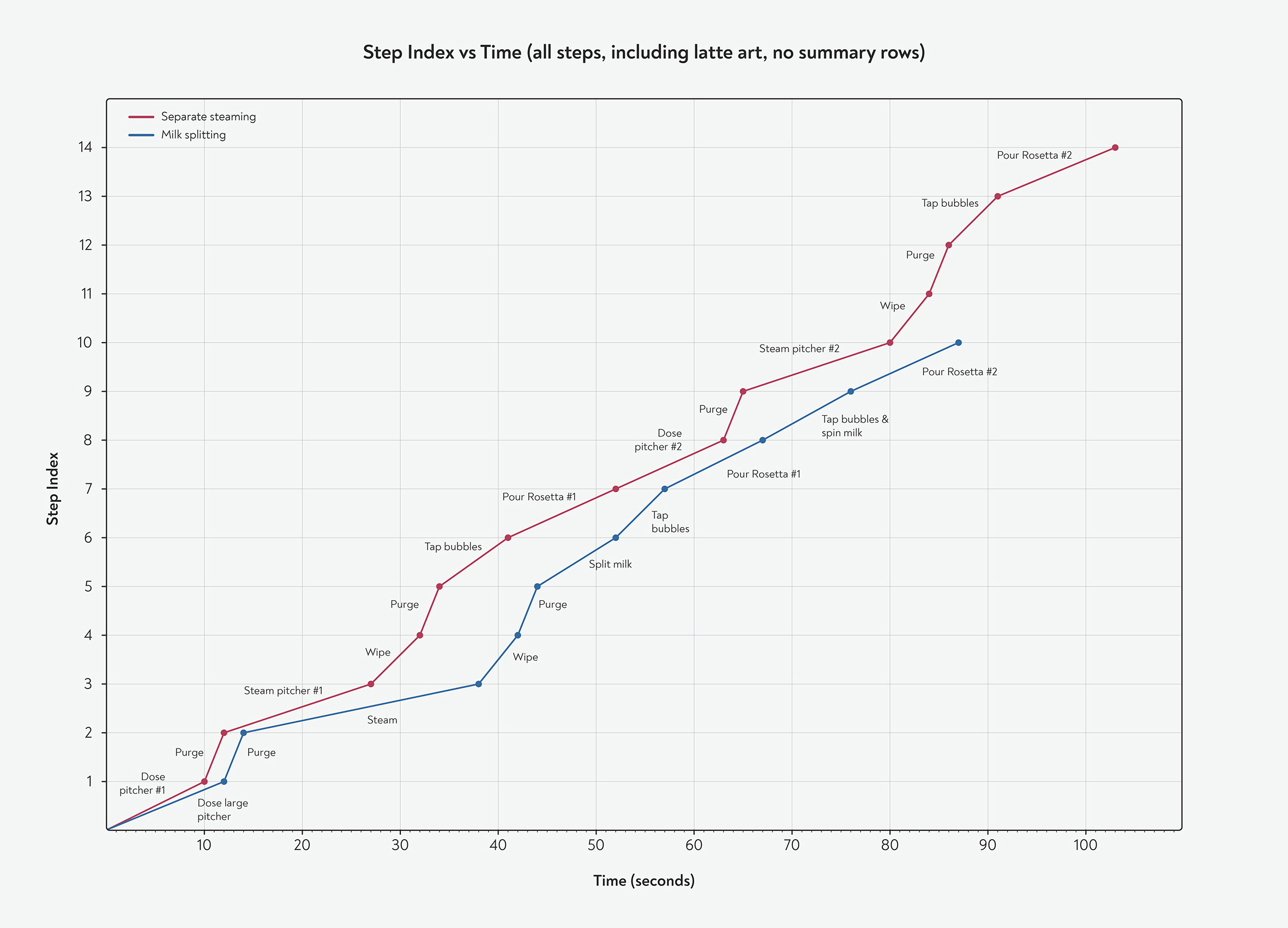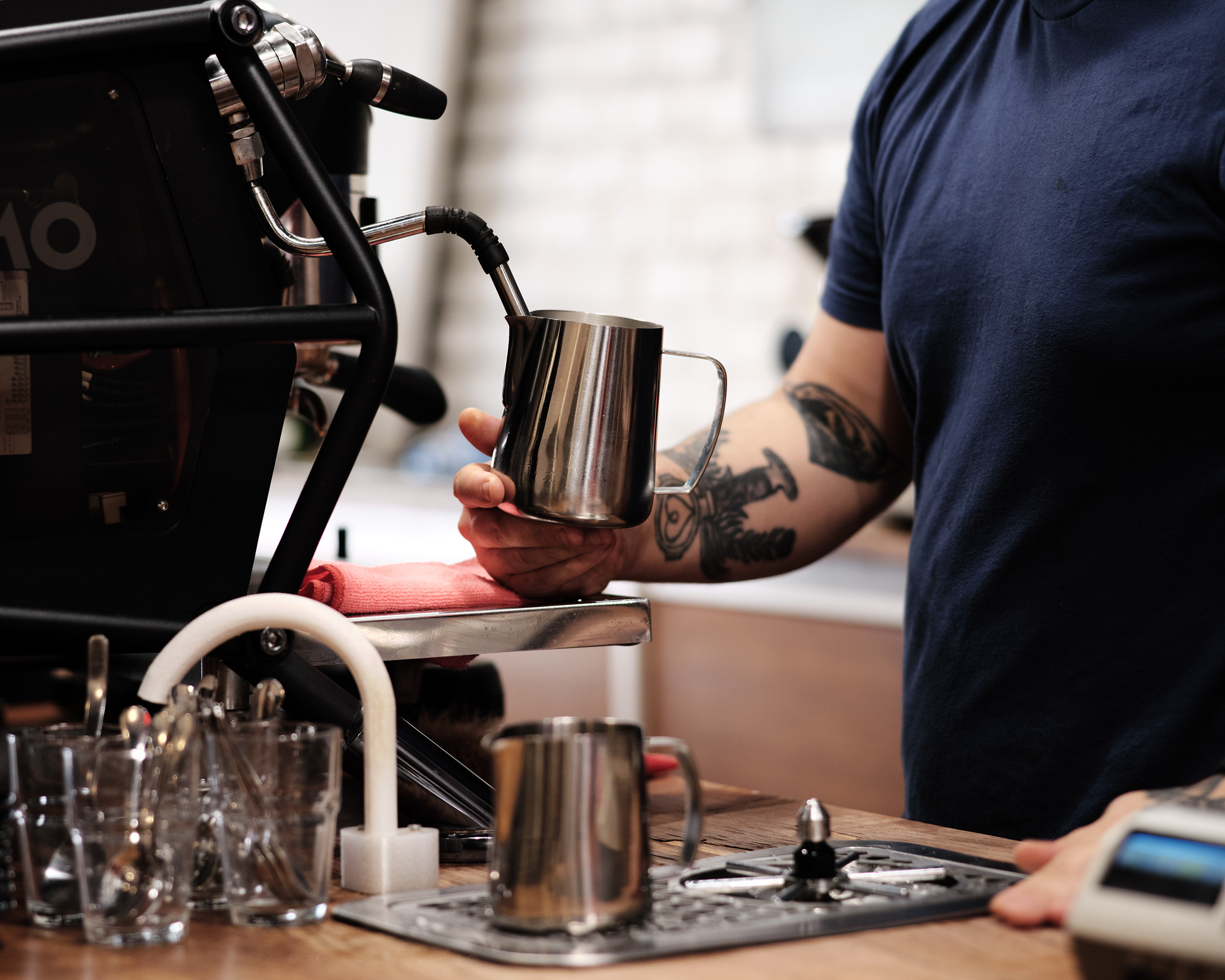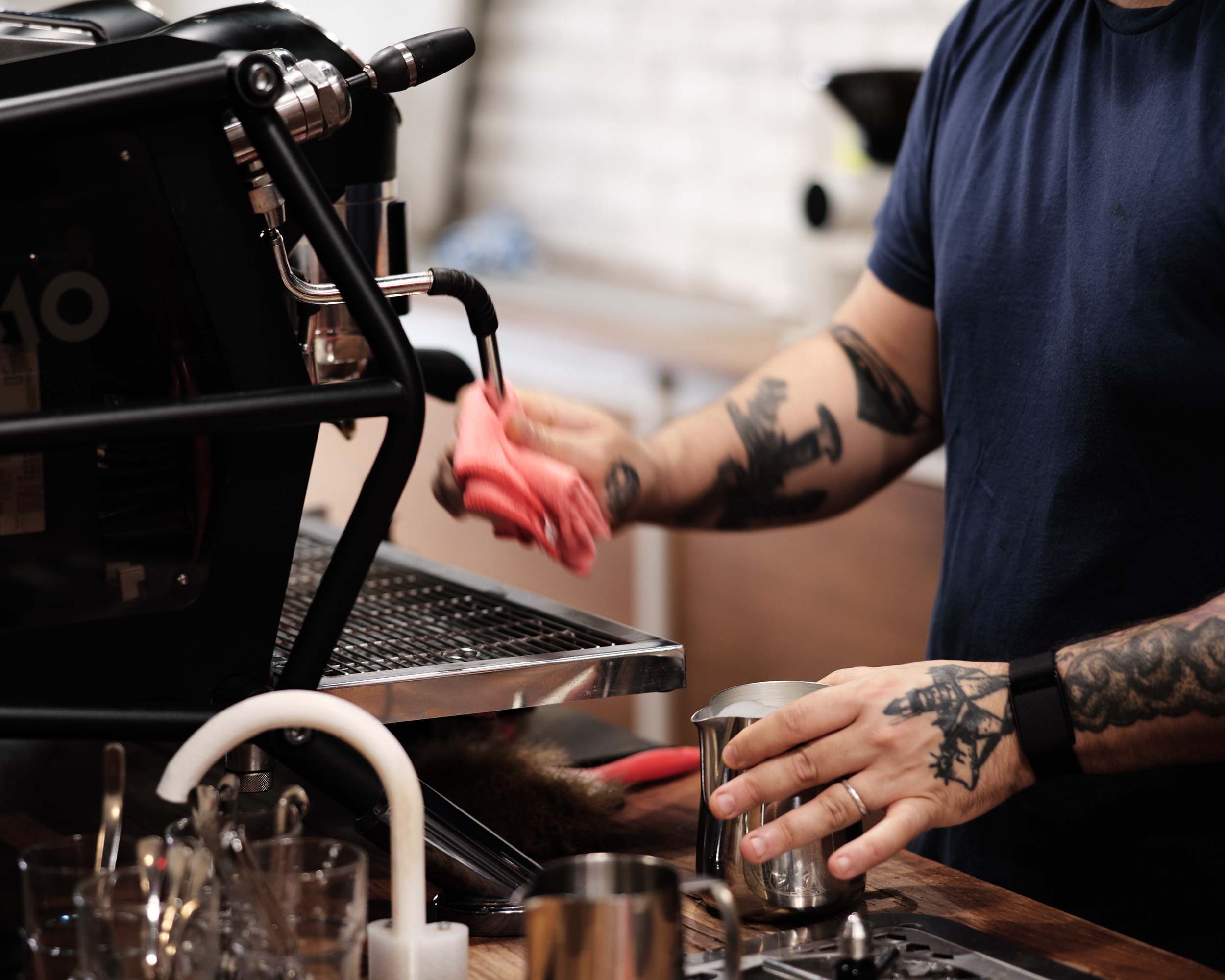There are two types of barista … one that steams individually for every beverage, and one that steams in twos. One’s not better than the other. In fact, Latte Art Champions tend to steam one by one, and World Barista Champions tend to do two by twos. If you steam four by four, you’re not a barista at all… you’re a demigod. We don’t recommend that for ordinary mortals. At BH, we teach you to do two by two. Let us explain why it’s the way forward.
We just published a big post about the importance of milk splitting. The point we were making was that it’s the only way to guarantee you get equal foam on each beverage when you’re hustling on bar, making drinks two by two. When we posted it up on Insta, one of the first comments that came through was from a barista who conjectured that it’s probably faster to steam one by one and skip the splitting altogether. Fair point — if you go one-by-one, there’s no splitting required. But let me tell you now: Faster it ain’t. And we can prove it.
What’s Your Time Split?
Our Dean of Studies Jem Challender cracked open the Schultz milk (let’s give them a plug because it’s marvellous non-homogenised organic milk from the southern state of Victoria, Australia) and set up to conduct a time trial. First he prepared two single-shot 6-oz espressos with milk where he steamed separately for each beverage. Then he made another pair of 6-oz beverages, where he steamed in one large pitcher, then split the milk in the way we describe here in our post from last week.
 It takes time to purge, steam, wipe, purge, split…
It takes time to purge, steam, wipe, purge, split…
Let’s take a look at the time splits (no pun intended) to see what method was faster, what method creates less work for the barista, and where inefficiencies lie. Please note, for both sets Jem was hustling at top speed. He poured rosettas on each drink because it’s a simple quick 10-second design. Tulips take longer to pour because to pour them, you have to stop and start several times, so choose hearts or rosettas when you’re hustling. And he attempted to wipe and purge the steam wand as efficiently as possible. The timings we show here do not report on the preparation or extraction time for the espresso — we are just focussing on the milk. So the timer starts at the moment Jem first reaches for the milk bottle. Here are the results of the time trial:
Observations
The milk splitting pair was 17 seconds faster. The ‘steam separately’ approach was 20% slower than the steam together. Can we agree that’s a pretty massive difference? And it’s not only the time factor you need to consider. Count up the actions involved in each method. With milk splitting, there’s half as many purges and wipes of the steam wand, and you only need to dose the milk once. This chart makes the difference pretty clear to see.
 The y axis shows a step index. That’s the amount of work involved. And the x axis shows the time in seconds. So it’s 14 steps for the steam separately and 10 for the milk splitting.
The y axis shows a step index. That’s the amount of work involved. And the x axis shows the time in seconds. So it’s 14 steps for the steam separately and 10 for the milk splitting.
Fewer repeat actions
Steaming once and purging once saves around 10 seconds on wand purging and wiping, 9 seconds on dosing the milk, and 8 seconds on steaming time. The comparison table (below) shows the delta between each type of work.
A Note on Optimising the Separate-Steaming Method
If you’re still not convinced, it’s worth noting there is a way to improve the separate seaming stats by about 5-6 seconds: Separate-steaming method could be marginally improved by portioning milk into both pitchers at the outset, rather than stopping to portion the second one mid-workflow. This tweak would save a few seconds — by avoiding the need to remove and replace the milk bottle lid twice.
Still, it’s not a full time saving. You’d still be steaming twice, wiping twice, and pouring twice. So while batching the milk dosing makes sense, it doesn’t close the gap on the clear time advantage of the steam-and-split method.
Want to Go Even Faster?
You heard a way to speed up the steam separately, but you can buy yourself another 6-7 seconds of speed with milk-splitting too. You’ll notice in the video, just before the final pour of the milk-splitting round, Jem pours the contents of the large pitcher back into the smaller pitcher. This is done to counteract drainage and it helps to improve your latte art. But it’s not an essential step. Just a quick spin of the pitcher should be enough to reintegrate the layers. You simply pour the second beverage from the large pitcher, instead of transferring it to the small pitcher. It takes a bit more practice to pour a good design from a larger pitcher, but if you have the need for speed, that efficiency alone makes milk splitting 28% quicker than steaming separately.







I find issue with this article claiming to be such strong evidence of milk splitting to be quicker. Its an interesting breakdown and a valuable contribution but it is just one person attempting it once, on one machine. More due diligence should be given to other evidence in the field such as 3fes blog post that took their team of experienced baristas making twenty cappuccinos back to back both ways which found that steaming individually was faster and of higher quality. In my experience personally, and in training baristas me and the baristas I’ve trained pretty much all record very similar times regardless of method. I’ve been training this on multiple machines. Multiple milks. Multiple baristas. Multiple companies. My intuition suggests the steam pressure of the machine makes a huge difference. Steam pressures capable of steaming large pitchers quickly are good for this experiment but difficult for baby baristas to get good quality with just enough milk for a flat white. It’s an interesting topic and one I’ve had many discussions on, and this post would benefit from acknowledging all those contributing factors.
Great job on exploring this topic, but a more thorough approach should be taken and wider acknowledgement of previous contributions are needed for this to be valuable. At the moment it risks being disadvantageous to those in the industry whose machinery differs but will take this post to be as authoritative as it’s been written.
Hey daniel.codd, Thanks for pointing out the old 3FE blog post. The main focus for our post was the ‘index of work.’ There’s 14 jobs to steam separately; 10 jobs to split. That’s a 40% increase in the number of actions you’re doing across two beverages if you steam separately. And that number won’t change no matter how many repetitions of the experiment we do.
When it comes to teaching new baristas how to steam milk, we have had a lot better success with the milk splitting approach. When you’re heating twice the quantity of milk, the rate of rise is slower so it’s easier to hit the correct temperature. And we find that steaming in the larger pitcher and then splitting makes baristas less nervous about spills and overflows, especially once the boiler pressure gets above 1.2 bar.